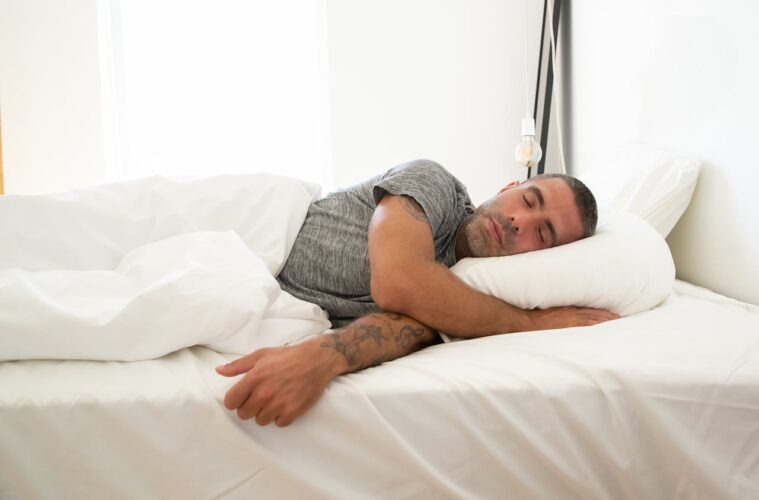A good night’s sleep is essential for overall health and well-being, and the right mattress plays a crucial role in achieving that. With so many options on the market, selecting the perfect mattress can feel overwhelming. This guide will walk you through everything you need to know to make an informed decision, from different mattress types to key factors you should consider before purchasing.
Understanding Different Mattress Types
There are several types of mattresses available, each offering different levels of support and comfort. Understanding these options will help you determine which is best suited to your needs.
1. Innerspring Mattresses
These are traditional mattresses that use metal coils for support. They provide a firmer feel and good airflow, making them an excellent choice for people who prefer a bouncy, responsive surface. However, they may not be the best for motion isolation.
2. Memory Foam Mattresses
Memory foam conforms to the shape of your body, providing excellent pressure relief and support. This type is ideal for people who suffer from joint pain or prefer a hugging sensation. However, traditional memory foam retains heat, so if you tend to sleep hot, look for gel-infused or breathable options.
3. Latex Mattresses
Made from natural or synthetic latex, these mattresses are known for their durability and responsiveness. They provide good pressure relief while maintaining a cooler sleep surface than memory foam. Natural latex is an eco-friendly option and resistant to dust mites and mold.
4. Hybrid Mattresses
Hybrids combine innerspring coils with memory foam or latex layers. They offer the best of both worlds: the bounce of innerspring and the contouring comfort of foam. They are an excellent choice for people who need both support and pressure relief.
5. Adjustable Air Mattresses
These mattresses allow you to adjust the firmness by inflating or deflating air chambers inside. Some models let partners adjust their side individually, making them great for couples with different sleep preferences.
Key Factors to Consider When Choosing a Mattress
1. Sleeping Position
Your preferred sleeping position should be a primary consideration when selecting a mattress.
- Side sleepers: Softer mattresses with good contouring (memory foam or hybrid) provide pressure relief on the shoulders and hips.
- Back sleepers: Medium-firm to firm mattresses (latex, hybrid, or memory foam) offer the right balance of support and comfort.
- Stomach sleepers: A firmer mattress (innerspring or latex) prevents the spine from sinking too much, reducing the risk of back pain.
- Combination sleepers: A responsive mattress (hybrid or latex) helps accommodate various sleeping positions throughout the night.
2. Firmness Level
Mattresses come in various firmness levels, usually rated on a scale from 1 to 10:
- Soft (1-3): Best for side sleepers who need pressure relief.
- Medium (4-6): Suitable for combination and back sleepers.
- Firm (7-10): Ideal for stomach sleepers and people who need extra support.
3. Body Weight
Your body weight can affect how a mattress feels and supports you.
- Light sleepers (<130 lbs): Softer mattresses provide better contouring.
- Average weight sleepers (130-230 lbs): Medium-firm mattresses work well for most sleep positions.
- Heavy sleepers (>230 lbs): Firmer mattresses offer better support and durability.
4. Motion Isolation
If you share a bed with a partner, motion isolation is essential. Memory foam and hybrid mattresses with foam layers absorb motion well, preventing disruptions when one person moves.
5. Temperature Regulation
If you sleep hot, consider a mattress with cooling features such as:
- Gel-infused memory foam
- Breathable latex
- Innerspring or hybrid mattresses with good airflow
6. Edge Support
If you tend to sit or sleep near the edge of your bed, strong edge support is essential. Innerspring and hybrid mattresses generally offer better edge support than memory foam.
7. Durability and Lifespan
A high-quality mattress should last at least 7-10 years. Latex and hybrid mattresses tend to be the most durable, while lower-end memory foam may sag over time.
8. Budget
Mattresses vary widely in price. While it’s tempting to go for the cheapest option, investing in a good-quality mattress will improve sleep quality and last longer. Expect to pay:
- Budget (£200-£700): Basic innerspring or memory foam mattresses.
- Mid-range (£700-£1,500): Hybrid, latex, and high-quality memory foam.
- Luxury (£1,500+): High-end latex, hybrids with advanced cooling, or custom features.
Trying Before You Buy
Many mattress brands offer trial periods ranging from 30 to 365 nights. Take advantage of these trials to ensure the mattress is the right fit for you. If buying in-store, test different models by lying on them for at least 10-15 minutes.
Mattress Maintenance Tips
To extend the life of your mattress:
- Use a mattress protector to prevent spills and allergens.
- Rotate or flip your mattress every few months (if applicable).
- Keep it clean by vacuuming and airing it out regularly.
Final Thoughts
Choosing the perfect mattress requires considering multiple factors, including your sleeping position, body weight, budget, and preferred level of firmness. Investing in a high-quality mattress can significantly improve your sleep and overall well-being. By understanding the different types of mattresses and their features, you’ll be able to make an informed decision and enjoy restful nights for years to come.

